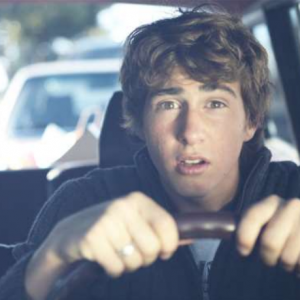During a driving test, nervousness increases the feeling of
uncertainty when performing the required manoeuvres which influences a delay to
the time to react.
Apart from being late in reacting, future drivers have a tendency to
suffer from anxiety episodes, they make other mistakes including
Lack of observation:
As a result of nerves, students make mistakes that include:
- Don’t look in the rearview mirror.
- Don’t turn your head to avoid blind spots so you can see signs and other road users.
- Do not look at the presence of traffic lights.
- Do not look for pedestrians trying to cross (especially at crosswalks).
zebra). - Do not pay attention to the presence of other vehicles following the same trajectory, or driving on the road to which they are intended to be incorporated.
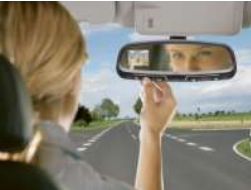
Roundabout
Failures made by pupils during the driving test in relation to the roundabouts go through:
- Reach an inadequate speed without slowing down.
Not giving way properly before entering.
Obstructing the passage of vehicles on the road during the franking phase.

Inadequate speed
The problems of not driving at the right speed arise mainly at the time to use the acceleration and deceleration lanes, so:
- Acceleration lanes: Inadequate speed when joining the new track; force vehicles on the track to which you are entering to slow down or to move.

- Deceleration lanes: brake or slow down before leaving the track, forcing to the vehicles behind to brake sharply.
Parking lots and stops
As far as parking lots are concerned, the main mistakes in execution are
- Don’t take references well.
- Climbing the kerb.
- Hitting parked vehicles.
- Parking in forbidden places (fords, loading and unloading areas, etc.)

In relation to stops, these are frequent errors of those examined:
- Bad placement or bad choice of place to stop.
- Making it difficult for other users to pass.
- Staying on continuous yellow lines or traffic lanes for certain
users (bus lane, bicycle lane, etc.).

To address this problem, so-called self-instructions arise to follow
procedures.
The approach to such self-instructions is based on the two
questions:
What’s going on?
Red light, the vehicle in front is going to turn, etc.
What do I do?
I stop, brake, lose speed, etc.
Situations that may arise during a driving test that may
to be more difficult and the self-instructions that we must consider to avoid
negative effects, are:
Stopping and Parking
The stopping manoeuvre and especially the parking manoeuvre can generate anxiety in the
person being tested because there may be other users waiting
to continue their march.
In these cases the driver must:
- Look in the mirrors and signal.
- Lose speed and brake gently.
- Signal if there is an approaching vehicle behind
too much. - Park quietly.

Highway and motorway additions
On this type of road, vehicles are moving at a high speed, which can be an anxious situation for the driver.
It is enough to follow the following self-instructions:
- Indicate the manoeuvre and look in the exterior and interior rear-view mirrors.
- Find a place to get on the road while running in the
acceleration. - If you decide to get behind another vehicle on the road, reduce the
speed. - If you decide to get in front of another vehicle on the road, accelerate.
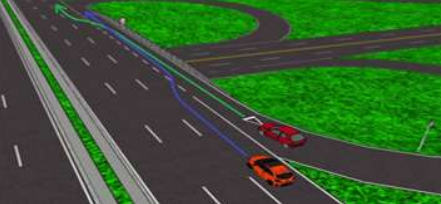
Situations that may arise during a driving test that may
to be more difficult and the self-instructions that we must consider to avoid
negative effects, are:
Overcoming obstacles
It is very common that within the urban area, other vehicles have to pass that
they find themselves standing in the middle of the lane.
In these cases the person being examined may be paralyzed and not know
what to do. To avoid this, the following instructions should be followed:
- Look in the mirrors and indicate the manoeuvre.
- Carry out the manoeuvre as soon as the traffic is not obstructed.
Avoid passing too close to the obstacle and check the traffic well.
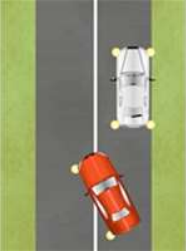
Starting uphill
Starting uphill is a difficult manoeuvre that can
to consider during a driving test. To avoid negative thoughts leading to stalling, the following self-instructions should be followed:
- Keep your right foot on the brake, your left foot on the clutch and
put the first gear in. - Lift your left foot until you feel a vibration (point of friction).
- Release the brake and let the vehicle stand still, then accelerate and gradually release the clutch, otherwise it will stall.
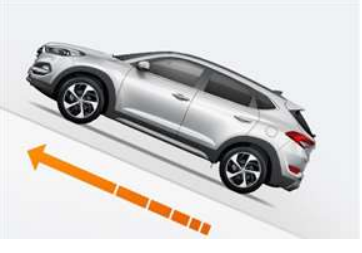
To calm your nerves and go relaxed to the practical exam, you can take the following tips:
- Try to enjoy the moment and the experience. Don’t block yourself thinking about whether you will pass or fail. Focus on that moment and relax as much as possible because the experience is worth it. All learning always brings something positive.
- The night before the exam, try to get enough sleep. Usually eight hours of sleep is enough to go to the exam awake and relaxed. You can do some kind of relaxation exercise to help you sleep.
- On the day of the test, even if you are somewhat sleepy, do not drink coffee, tea, or other stimulants. Try to eat something light before leaving home, or if you are not hungry, drink something hot such as a chocolate or tea.
- Whether you go to the test center on your own or with your driving school, it is a good idea to leave early. You can bring something to read to keep you entertained and not to get impatient.
- Leave your mobile phone at home or switch it off as soon as you arrive at the test centre. Receiving a call in the middle of an exam is not advisable.
- Try to relax when you are with the examiner. Be friendly, but let the examiner do most of the talking. Remember that he doesn’t know us and is about to get on the road without knowing if we know how to drive properly and safely or not.
- Once you are in the car with the examiner, pay maximum attention to him and obey point by point what he asks. If you remain calm and act as if it were another class, everything you are told will be done perfectly. If you are not sure what you are asking, ask him to explain it more clearly. It doesn’t cost anything to ask, and it is much worse to say nothing and make a mistake or do something dangerous.
- Finally, think that it’s okay to fail because luckily you have as many chances as you need until you can pass.

Free driving time is your main ally
Autonomous driving is understood as that which is carried out by an applicant in a way
independent, developing in a natural way, without the instructions and indications of the examiner, altering or interfering with their decision making and therefore their general behavior during this phase of the test. It is performed during the first 10 minutes of the test.
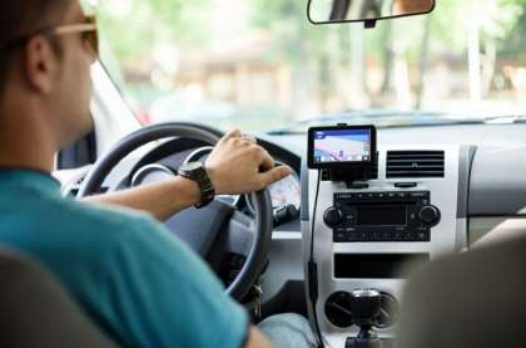
One of the objectives of this part of the exam is to achieve, during the initial phase, the necessary tranquillity of the student, providing him/her with greater security while driving.
Other objectives are to show their ability to make personal decisions, to allow them to move from one place to another, which are sometimes unknown to them, to make the applicant see that driving is a multi-tasking activity, to provide the examiner with a more complete and spontaneous vision, which allows him/her to make a more real and authentic assessment, as well as to appreciate the applicant’s knowledge and skills.
Optionally, the instructions of any satellite navigation system may be followed, if the vehicle is equipped with one, with the applicant entering the destination point or route indicated by the examiner.

